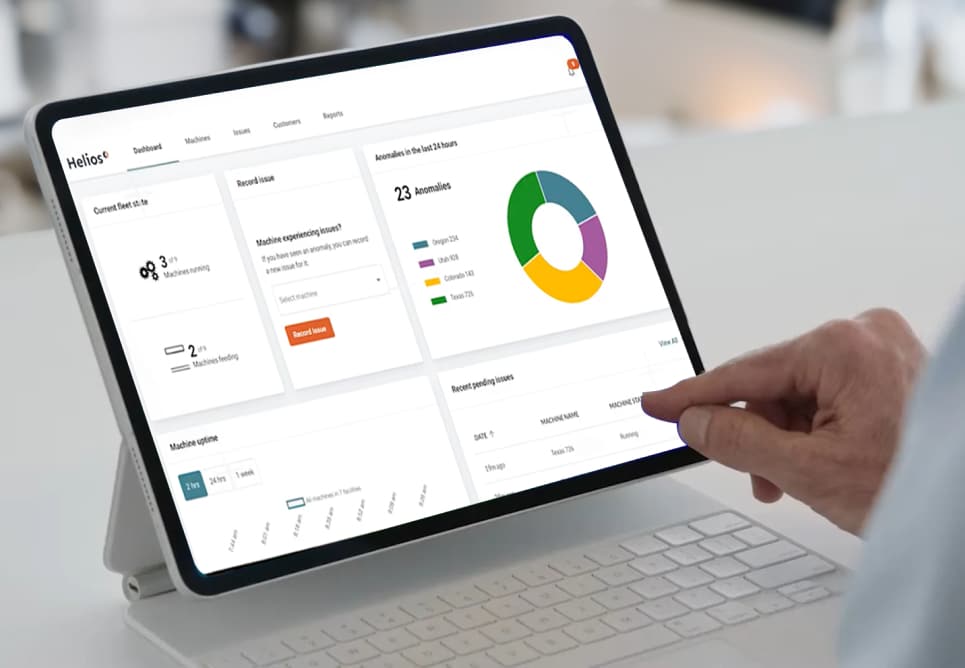BLOG
Data Wrangling for IoT Analytics: What You Need to Know
There’s an old saying in the data community: “garbage in, garbage out.” In other words, the quality of your data impacts the quality of your analysis, which ripples into your entire business operations.
Extracting accurate, actionable insights from IoT data is a key catalyst for making impactful business decisions. But the data collected by IoT devices is messy and challenging. It comes from several sources, often in varying formats. That’s where data wrangling comes in.
Data wrangling is the process of transforming raw, unstructured data to a clean, usable form. It’s the critical stepping stone that lies between data collection and analysis — one that shouldn’t be overlooked. In this blog post, we’ll provide a high-level overview of the data wrangling tools and techniques that can help you drive accurate IoT analytics and tackle your toughest IoT challenges.
What Is Data Wrangling?
When it comes to IoT analytics, data quality is king. Analyzing unstructured data from diverse IoT sources is chaotic at best, but data wrangling aims to make that data as useful as possible. And it isn’t just a one-time ordeal; data wrangling is an ongoing process to ensure continuous access to high-quality data. Data wrangling can take on many forms, whether that means filtering or correcting bad data, enriching data via transformations or external sources, or restructuring data to become more digestible. Wrangling unveils relationships between data points, minimizes noise, and corrects errors, paving the way for robust analytics. For a deeper dive, check out our in-depth guide to mastering data wrangling here.
Tools and Techniques for Data Wrangling in IoT Analytics
Data wrangling involves several tools, which we’ll briefly go over below.
For wrangling data from a relational database (or multiple databases), SQL is the typical go-to. That’s because it’s capable of operating and merging data efficiently and scalably.
For more complex transformations — and for handling raw data not yet formatted in rows and columns — we rely on languages like Python, which have advanced libraries for transforming data that can be incorporated into production software. Other use cases may benefit from other tools; wrangling data on an edge device may require porting some of the data processing steps to embedded C, while handling large volumes of data in the cloud can be accomplished using Apache Spark.
Additionally, data wrangling is essential for building machine learning products, but machine learning is also used in the data wrangling process itself. Machine learning can be used to fill in missing data, detect and anonymize personally identifiable information, or link different records when merging data.
Data Wrangling in Action
Let’s put theory into practice with a real-world example.
Very built a robust predictive maintenance solution for SUN Automation Group, a global leader in corrugated manufacturing solutions. From the beginning, it was clear that our ability to wrangle the data would determine the success of the project.
We began by collecting telemetry data gathered from programmable logic controllers (PLCs). Once the data was ingested from the PLCs, it was structured and sent to the cloud to be cleaned. From there, the Very team enriched the data with calculations informed by subject matter experts. We were able to transform the raw data from the PLC into useful metrics that became the backbone for the product’s analytics dashboards.

Dive into the SUN Automation case study here to discover the transformative power of data wrangling in action.
Final Thoughts
As connected devices multiply across networks and businesses become increasingly reliant on IoT data, wrangling will continue to play a pivotal role in IoT analytics. Data wrangling shouldn’t be considered an add-on; it’s a vital step to the process that helps make informed, accurate decisions that shape business operations and propel innovation forward.








